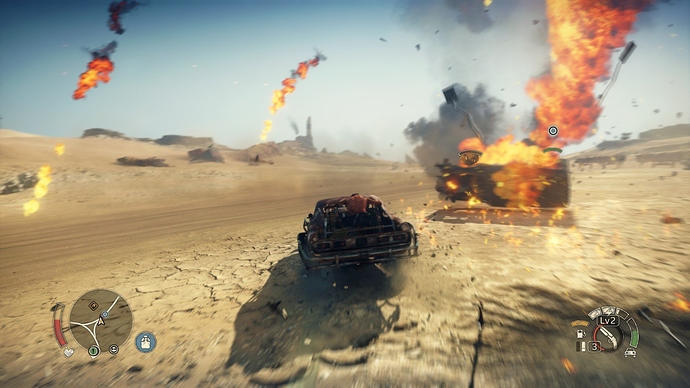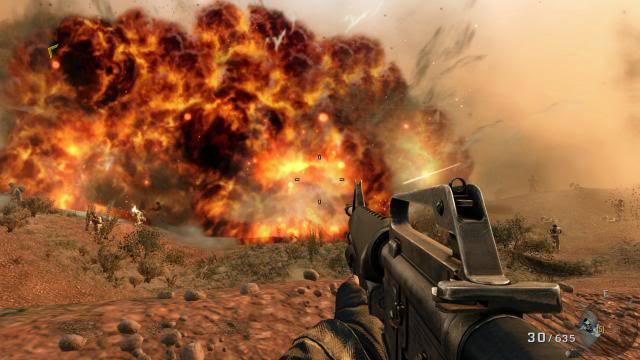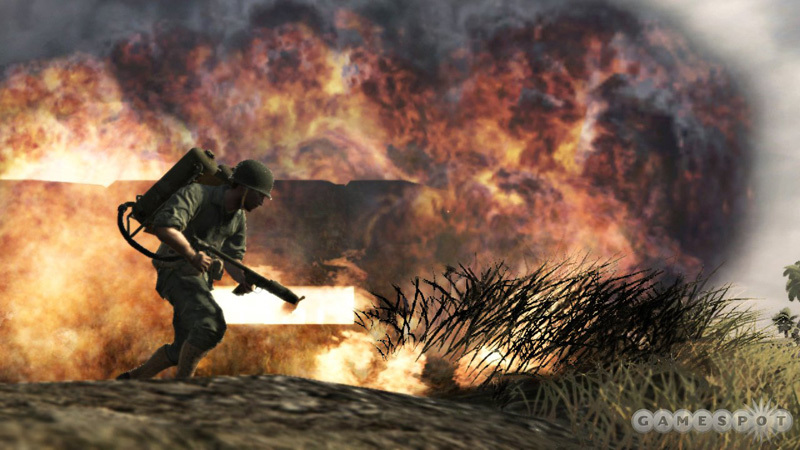Love this discussion. I agree that we’re a short ways away from having practical usages of volumetrics and fluids in realtime, paralleling the progression of films. I fully believe that our workflows and broad concepts are about 10 years behind, but closely following the capabilities of, film. Every time there is a new console jump, the entire real-time industry jumps to say “Hooray fluids!!” but they always skip the early steps that film required to get there. We’re currently in the middle of a massive technological innovation state for games, but not a lot of people recognize it:
Shaders
There was an era across the early to mid 2000s when fluid simiulations were still far too costly to use across full productions. Think the Balrog in Lord of The Rings: All of the fire was still done on sprites, with amazing shaders. The tools of the era were all about putting super complex and beautiful shaders on basic sprite particles (oh man it’d driving me crazy that I can’t think of the names of these software… edit: AFTERBURN!)
In games, we can do AMAZING things with intelligent shaders, vertex shaders, compute shaders, etc. We can handle complex lighting on particles, beautiful procedural or physical motion, stunning scene integrations, and even player interactions within our shaders. If shader toy is an example of anything, it’s that marvelous things can be made with shaders. I’ll also say that anyone who can correctly use shaders in this industry has incredible job security.
There’s another component of this that I find matters far more than we give it credit for - our authoring tools usually aren’t keeping up, and most companies don’t prioritize these improvements. Our team at Naughty Dog was extremely unique in that we had a dedicated graphics programmer for the better part of 5 years (starting tools from scratch though), and now I’d argue that they have some of the most amazing in-game vfx interactions in our industry. Most studios don’t have this, and our only saving grace is being able to point to the amazing work that the team at epic is doing to increase our potential, or external tool integrations like those from the great team at SideFX.
I’m also seeing a massive counter trend away from realism in FX towards stylized effects. Largely, I view this as a direct result of how technical our tools and workflows have become, pushing a lot of very artistically talented FX artists to find beautiful and elegant ways to make their FX captivating without the needs of insane math and abstract workflows. They probably get to go home from work a lot earlier for it too. For new artists entering the industry, there are far less external roadblocks (and thanks to people like @Keyserito far more resources) to become a great stylized FX artist.
All of this rambling is to say that while I definitely agree we’re moving towards real time fluid simulations, we’re in an earlier stage of technology where we should be focusing on the same exploits that happened in film - shaders and integration. I contend that we won’t widely get fluids until we step through this process and build a more evenly balanced (art vs tech) workflow to utilize them.
On a very personal level, this might be the largest reason I’ve been pushing to make this forum with all of you - so that we as an industry of artists can share more of our techniques and develop our next year to ten years of workflows and expectations together, and to allow people outside of vfx to get a glimpse of the world we are living in.





